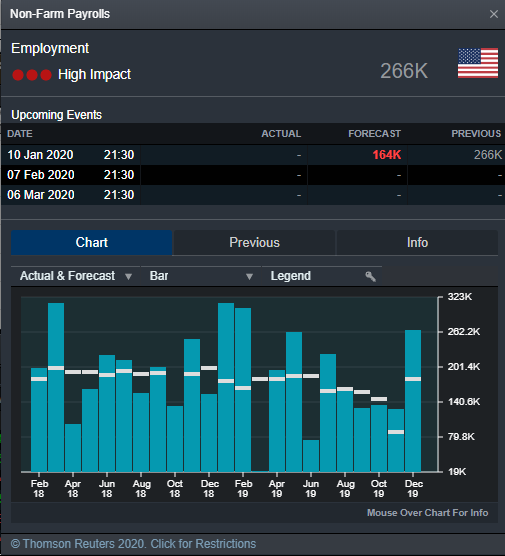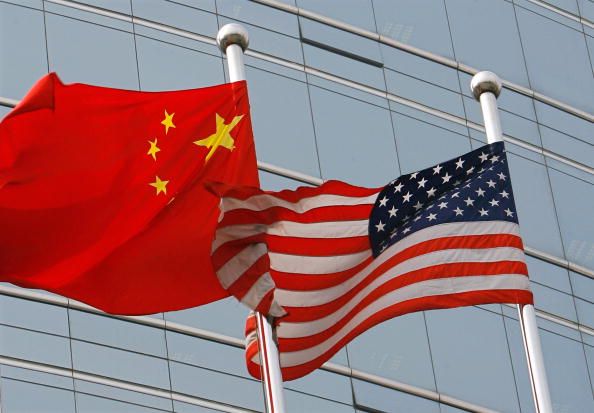Chinese officials have confirmed a phase-one trade deal will be signed in Washington on 15th January, led by Vice Premier Liu He. This helped to clear the last hurdle in the markets following a de-escalation in US-Iran tensions.
The question is how much more upside is there, given the fact that December’s rally have more or less priced this in.
US equities closed at record highs on Thursday, boosted by fading geopolitical tensions and a confirmation of the signing of the trade deal. Tonight’s US non-farm payroll, unemployment and salary data will be in focus, as it reveals the health of the US jobs market. This week’s ADP private payroll smashed market expectations on the upside and November’s reading was revised up higher. Forecast for tonight’s non-farm reading is 164k. An upbeat number could boost dollar and US equities and lead to more selloff in gold and safe-havens.
Unwinding activities to put pressure on gold in the short term, immediate support at 1,550 and then 1,532. In the mid to long term, however, the central bank’s accommodative policy stance and potential re-escalation of geopolitical tensions put gold in a good position to jump up again.
Asian EM equity is posited for a potential ‘catch-up’ rally with global peers this year, as they have largely underperformed in 2019.
Sector wise, cyclical upswings in the global economy may put manufacturing, consumer discretionary, financials and industrials in a better position this year. Defensive sectors and interest rate sensitive sectors might underperform. Hong Kong & Singapore equities are relatively undervalued.
China’s December headline CPI stayed on par with November’s level, at 4.5%, as the rise in the cost of port slowed after authorities released more than 100k tones of reserves to meet a seasonal peak of demand as we move closer towards the CNY holiday. Food alone, contributed more than 4% increase in the CPI reading. Going forward, port prices are likely to remain elevated for the first half of the year.
PPI, which measures the cost of goods at the factory gate, however, has fallen 0.5% in December year-on-year, suggesting demand for production is weak.
China’s exportgrowth is set to rebound to mid-high single digit in December, due to seasonal rise in orders and improved trade sentiment after the phase one deal was agreed.
China’s GDP may rebound slightly in Q4 from Q3’s reading of 6.0, driven by infrastructure projects. Private sector manufacturing activities continued to shrink, suffering from the scaling down of factory activities due to the US tariffs. This will add even more uncertainty in terms of job security and salary growth, which, in turn, will put pressure on consumption, even if substantial public sector growth acts to counter these negative pressures.
US Non-farm payroll

Disclaimer: CMC Markets Singapore may provide or make available research analysis or reports prepared or issued by entities within the CMC Markets group of companies, located and regulated under the laws in a foreign jurisdictions, in accordance with regulation 32C of the Financial Advisers Regulations. Where such information is issued or promulgated to a person who is not an accredited investor, expert investor or institutional investor, CMC Markets Singapore accepts legal responsibility for the contents of the analysis or report, to the extent required by law. Recipients of such information who are resident in Singapore may contact CMC Markets Singapore on 1800 559 6000 for any matters arising from or in connection with the information.








